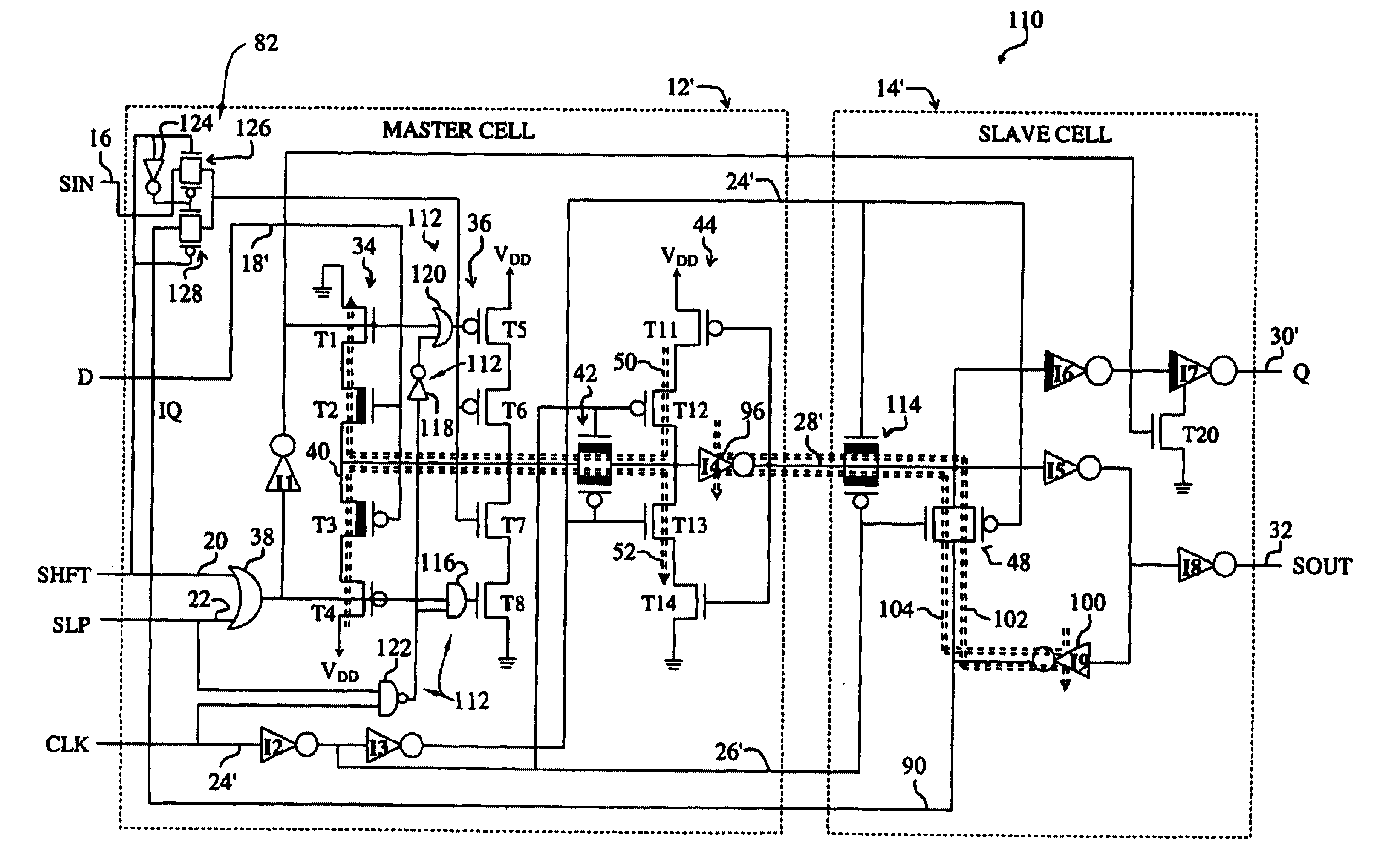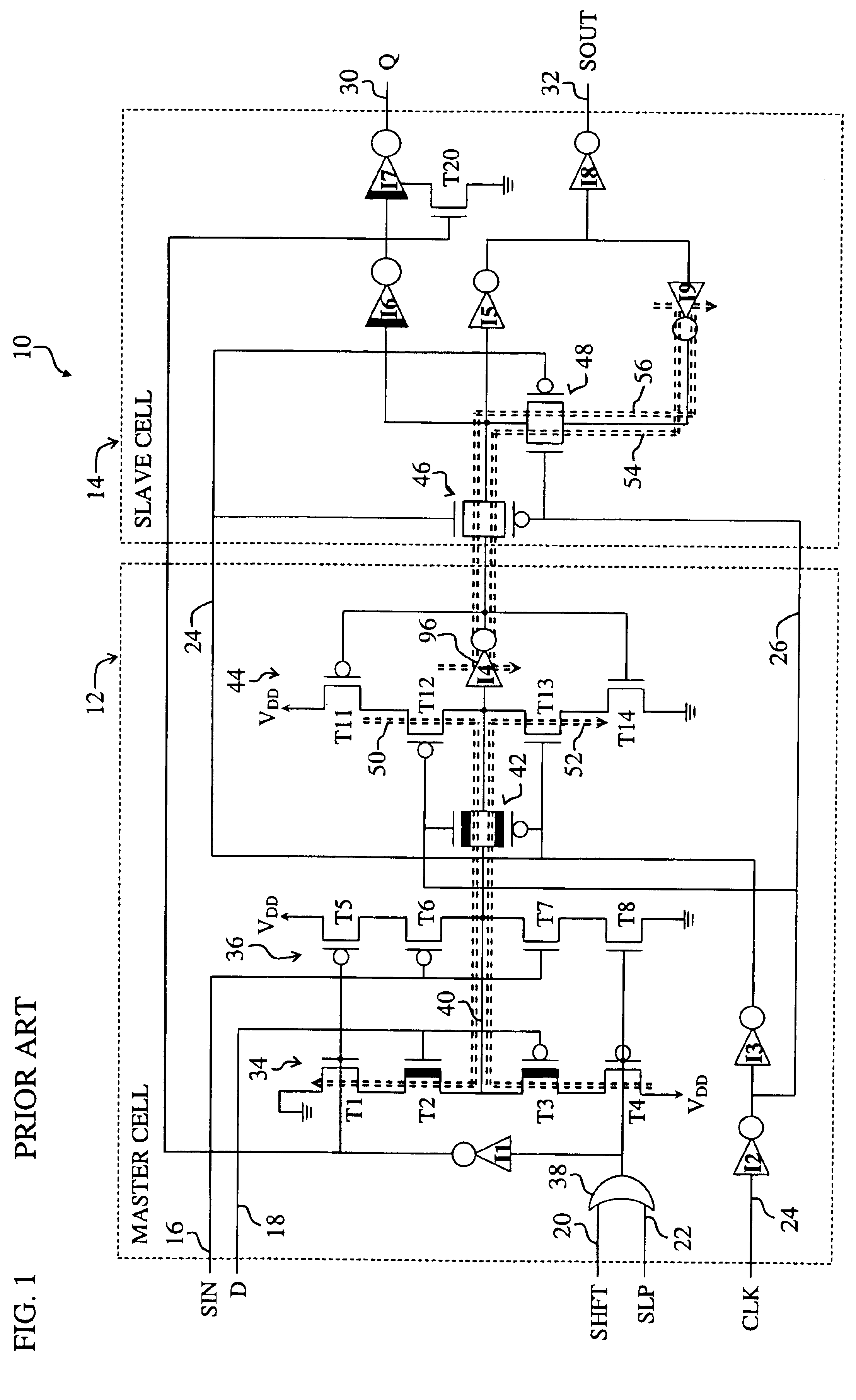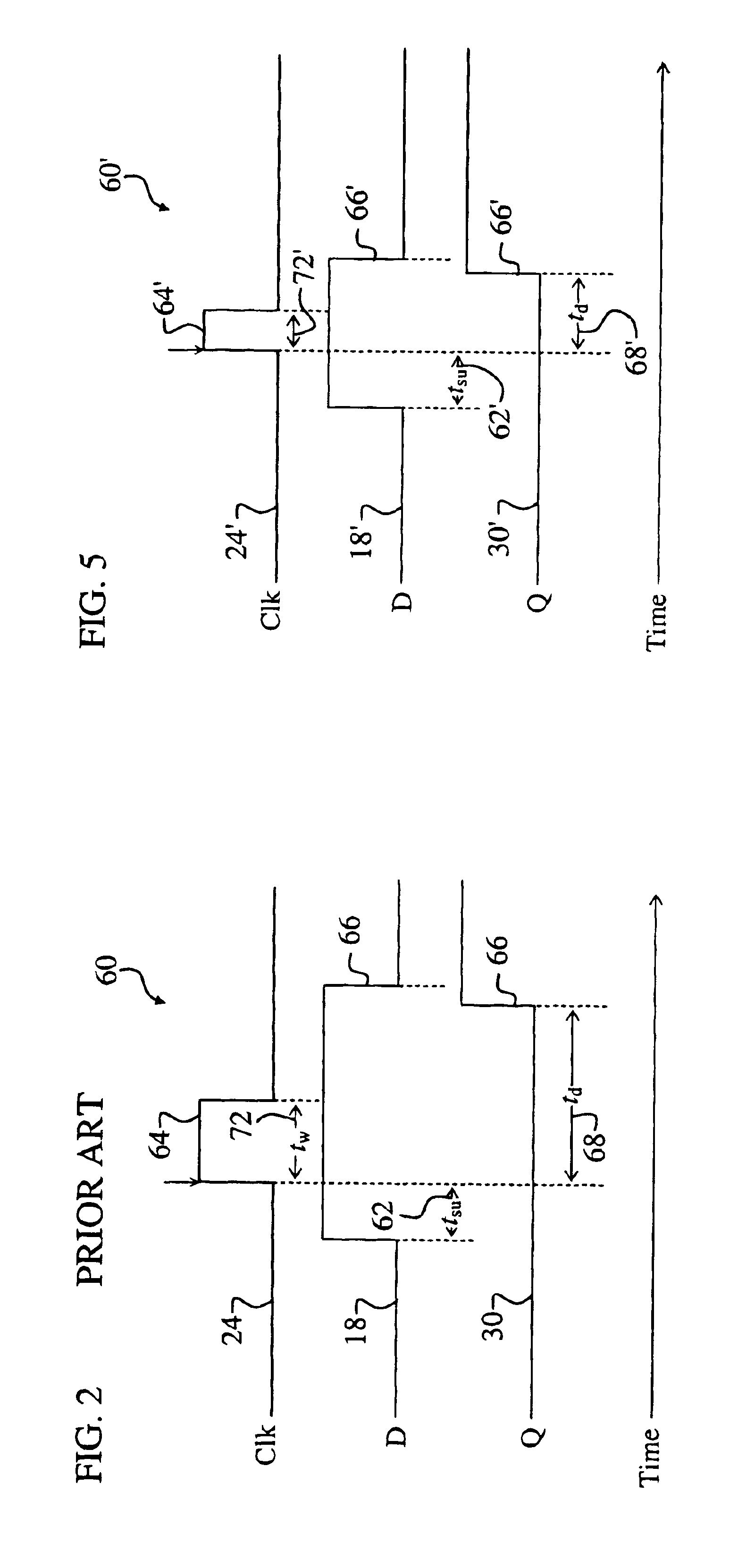System for reducing leakage in integrated circuits during sleep mode
a technology of integrated circuits and leakage reduction, applied in the field of integrated circuits, can solve the problems of hvt's relatively slow turn on, current leakage is particularly problematic, and latches primarily employing hvts, so as to minimize leakage, minimize leakage, and present invention
- Summary
- Abstract
- Description
- Claims
- Application Information
AI Technical Summary
Benefits of technology
Problems solved by technology
Method used
Image
Examples
Embodiment Construction
[0027]While the present invention is described herein with reference to illustrative embodiments for particular applications, it should be understood that the invention is not limited thereto. Those having ordinary skill in the art and access to the teachings provided herein will recognize additional modifications, applications, and embodiments within the scope thereof and additional fields in which the present invention would be of significant utility.
[0028]The following discussion of a conventional master-slave D flip-flop latch is intended to facilitate an understanding of the present invention.
[0029]FIG. 1 is a diagram of a conventional master-slave D flip-flop latch 10 requiring that the clock must sleep low. For clarity, various well-known components, such as power supplies, substrates, and so on, have been omitted from the figures, however those skilled in the art with access to the present teachings will know which components to implement and how to implement them to meet th...
PUM
 Login to View More
Login to View More Abstract
Description
Claims
Application Information
 Login to View More
Login to View More - R&D
- Intellectual Property
- Life Sciences
- Materials
- Tech Scout
- Unparalleled Data Quality
- Higher Quality Content
- 60% Fewer Hallucinations
Browse by: Latest US Patents, China's latest patents, Technical Efficacy Thesaurus, Application Domain, Technology Topic, Popular Technical Reports.
© 2025 PatSnap. All rights reserved.Legal|Privacy policy|Modern Slavery Act Transparency Statement|Sitemap|About US| Contact US: help@patsnap.com



